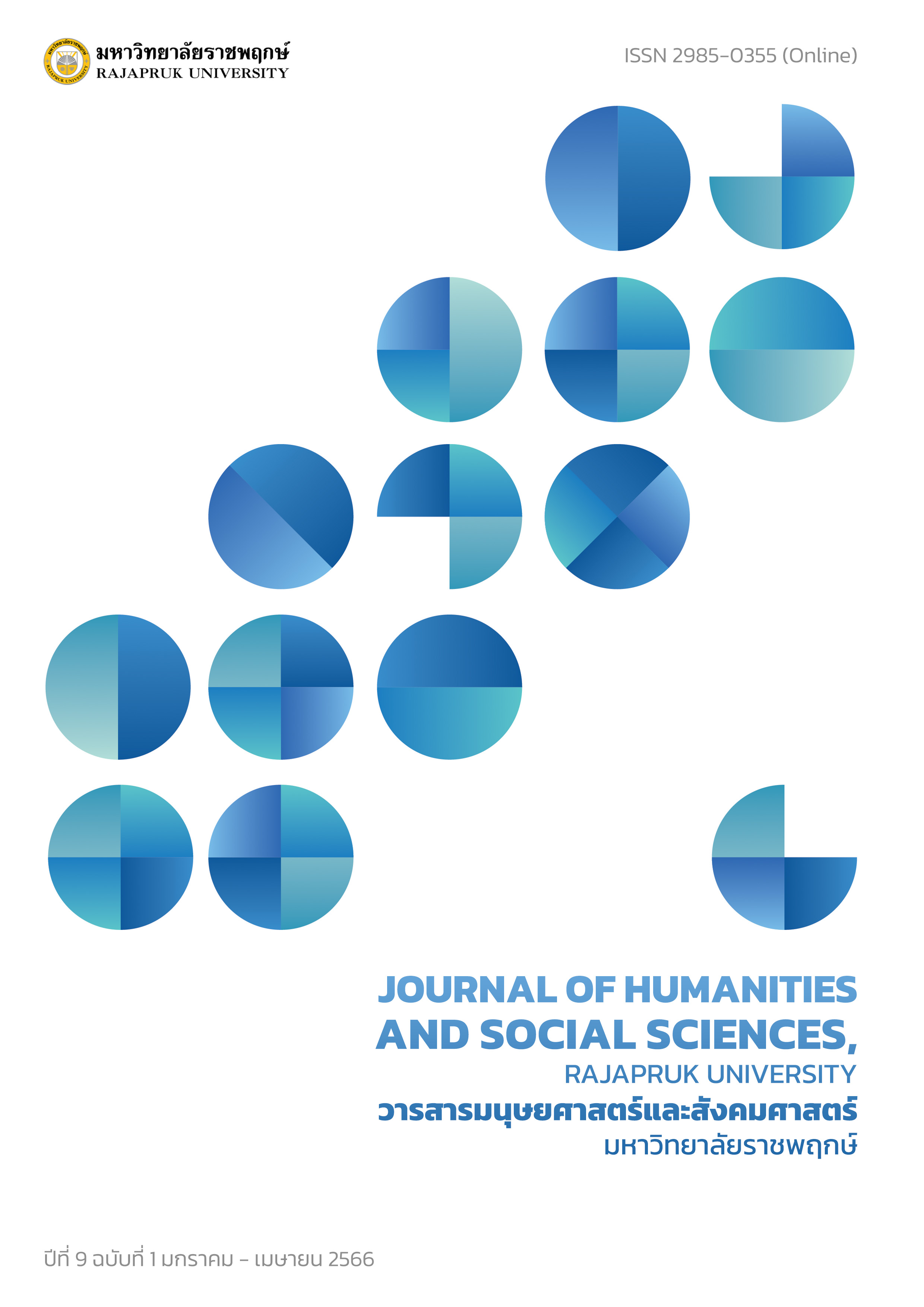Promoting Students’ Creating Innovators of the Sub-District Quality Schools under the Secondary Educational Service Area Office Bangkok 1
Main Article Content
Abstract
The objectives of this research were to study and compare the opinions of the administrators and teachers about promoting students’ creating innovators of the sub-district quality schools under the Secondary Educational Service Area Office Bangkok 1, classified by personal status. The sample group consisted of 329 school administrators and teachers, selected through stratified random sampling. The research instrument was a questionnaire with a validity (IOC values) = 0.67-1.00 and a reliability value of 0.97. The data were statistically analyzed by using percentage, mean, standard deviation, t-test, One-way ANOVA, and LSD (The Least Significant Difference).
The results of the research were as follows: 1) Promoting students’ creating innovators of the sub-district quality schools under the Secondary Educational Service Area Office Bangkok 1 was at a high level in the overall and particular aspects, which the highest mean aspect was Promoting the future orientation, followed by Promoting the creative thinking, Enhancing the learning opportunity, Promoting the skill of discovery, Enhancing the learning community and Enhancing the Learning environment respectively, and 2) The opinions of administrators and teachers classified by education level and school size on promoting students’ creating innovators of the sub-district quality schools under the Secondary Educational Service Area Office Bangkok 1 were significantly different at a level of .05, on the other hand, the ones also classified by gender and work experience were not different.
Article Details
References
ธัญภา แสงตันชัย. (2561). การบริหารสื่อและเทคโนโลยีการจัดการเรียนรู้ของโรงเรียนมัธยมศึกษาเอกชนในกรุงเทพมหานคร. วิทยานิพนธ์ ศึกษาศาสตรมหาบัณฑิต สาขาวิชาการจัดการการศึกษา มหาวิทยาลัยธุรกิจบัณฑิตย์.
ประภัสสร ดิษสกุล. (2562). ความต้องการจำเป็นในการพัฒนาการบริหารโรงเรียนตามแนวคิดการพัฒนานักเรียนให้มีความคิดสร้างสรรค์. ครุศาสตรมหาบัณฑิต บริหารการศึกษา จุฬาลงกรณ์มหาวิทยาลัย.
ราชบัณฑิตยสถาน. (2552). พจนานุกรมฉบับราชบัณฑิตยสถาน. กรุงเทพฯ: อักษรเจริญทัศน์.
วสันต์ สุทธาวาศ.(2558). การพัฒนาโปรแกรมเสริมสร้างศักยภาพความเป็นนวัตกรการศึกษา. ปรัชญาดุษฎีบัณฑิต สาขาวิชาการจัดการ มหาวิทยาลัยศิลปากร.
ศศิธร ศรีพรหม. (2558). การพัฒนากระบวนการส่งเสริมการคิดเชิงอนาคตของนักเรียนมัธยมศึกษาโรงเรียนวิถีพุทธ. หลักสูตรปรัชญาดุษฎีบัณฑิต สาขาวิชาวิจัยวัดผลและสถิติการศึกษา คณะศึกษาศาสตร์ มหาวิทยาลัยบูรพา.
สถาพร พฤฑฒิกุล. (2555). คุณภาพผู้เรียน...เกิดจากกระบวนการเรียนรู้ Quality of Students Derived from Active Learning Process. วารสารการบริหารการศึกษา มหาวิทยาลัยบูรพา, 6(2): 1-13
สำนักงานเขตพื้นที่การศึกษามัธยมศึกษากรุงเทพมหานคร เขต 1. (2557). รายงานการติดตามและประเมินผลการจัดการศึกษามัธยมศึกษา ประจำปีการศึกษา 2556. กรุงเทพฯ: สำนักงานคณะกรรมการการศึกษาขั้นพื้นฐาน กระทรวงศึกษาธิการ.
สำนักงานเขตพื้นที่การศึกษามัธยมศึกษากรุงเทพมหานคร เขต 1. (2562). หนึ่งตำบลหนึ่งโรงเรียนคุณภาพ. ค้นเมื่อวันที่ 30 มีนาคม 2564, จากhttp://www.secondary5.go.th/main/sites/default/files/files_ attach/เล่มโรงเรียนคุณภาพ_compressed.pdf
สำนักงานเขตพื้นที่การศึกษามัธยมศึกษากรุงเทพมหานคร เขต 1. (2563). วิสัยทัศน์. ค้นเมื่อวันที่ 30 มีนาคม 2564, จาก https://www.sesao1.go.th/about/vision
สำนักงานรับรองมาตรฐานและประเมินคุณภาพการศึกษา. (2560). รายงานการสังเคราะห์ ผลการ ประเมินคุณภาพภายนอกรอบสาม ของสถานศึกษาขั้นพื้นฐาน. กรุงเทพฯ: สำนักงานรับรองมาตรฐานและประเมินคุณภาพการศึกษา.
สำนักงานศึกษาธิการภาค 2. (2562). โครงการศึกษาการดำเนินโครงการโรงเรียนคุณภาพประจำตำบล (1 ตำบล 1 โรงเรียนคุณภาพ). ค้นเมื่อวันที่ 30 มีนาคม 2564, จาก http://www.reo2.moe.go.th/web/images/download/2562-reo2-1T1S.pdf
สุกัญญา แช่มช้อย. (2563). การพัฒนานวัตกรรมการบริหารโรงเรียนเพื่อเสริมสร้างสมรรถนะนวัตกรของนักเรียนมัธยมศึกษา. วารสารศึกษาศาสตร์มหาวิทยาลัยนเรศวร, 22(1), 193-213.
สุริศา ริมคีรี. (2562). การพัฒนาตัวบ่งชี้องค์การแห่งนวัตกรรมการศึกษาของโรงเรียนมัธยมศึกษาสังกัดสำนักงานคณะกรรมการการศึกษาขั้นพื้นฐาน. ปรัชญาดุษฎีบัณฑิต สาขาวิชาการบริหารการศึกษา คณะศึกษาศาสตร์ มหาวิทยาลัยบูรพา.
Chatenier, E. D., Verstegen, J. A., Biemans, H. J., Mulder, M., & Omta, O. S. F. (2010). Identification of competencies for professionals in open innovation teams. R&d Management, 40(3): 271-280.
Furr R., Nathan and Dyer H., Jeffrey. (2014). The Innovator's Method: Bringing the Lean Start- up into Your Organization. Harvard Business School Press.
Wagner, T. (2012). Creating innovators: The making of young people who will change the world. New York: Scribner/Simon & Schuster Publisher.
Yamane, Taro. (1973). Statistics: An Introductory Analysis. 3rd ed. New York: Harper and Row Publications.


